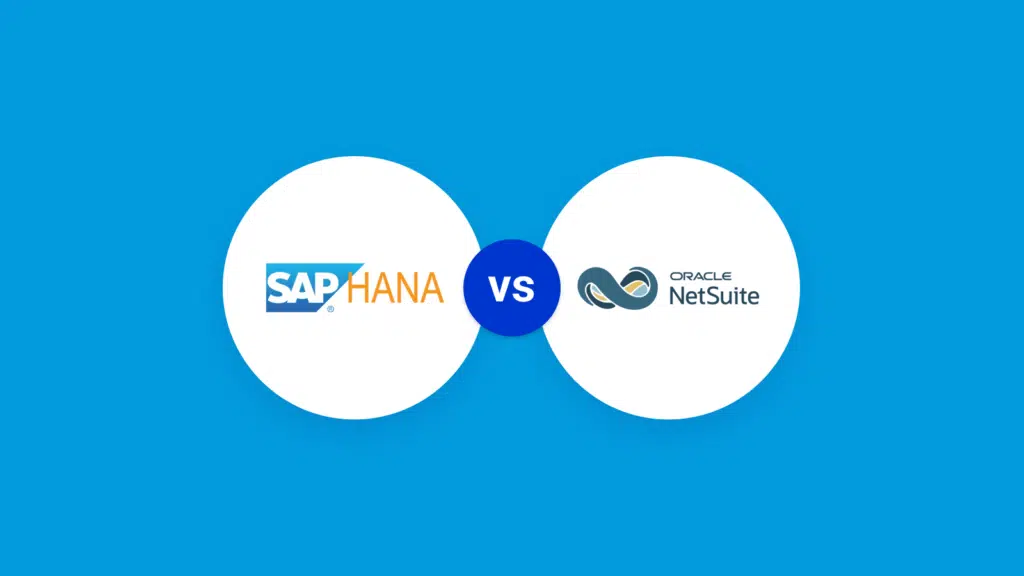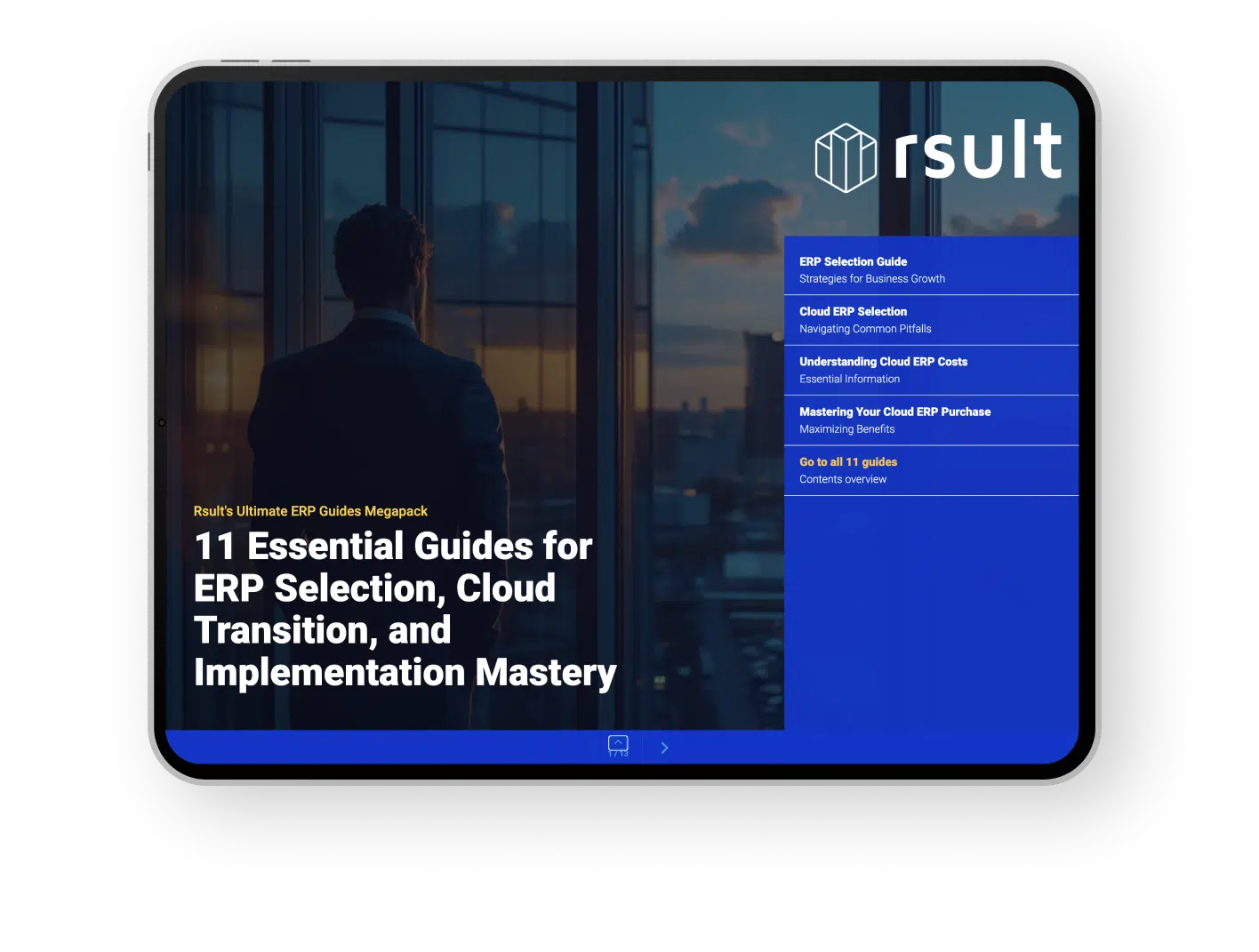In the evolving landscape of enterprise resource planning (ERP), choosing the right system stands paramount for businesses aiming to streamline their operations and bolster growth. Two frontrunners, NetSuite and SAP HANA, lead the charge in providing advanced ERP technologies to organizations worldwide. Each platform comes with its own set of strengths, designed to fit the intricate puzzle of modern business management systems.
As industry leaders in midmarket solutions, both NetSuite and SAP HANA promise to elevate businesses by offering comprehensive, integrated tools for managing finance, customer relations, and inventory. However, the pivotal decision for companies is to choose between NetSuite’s holistic, cloud-based application and SAP HANA’s versatile systems catered towards varied needs and customization levels. This comparative exploration embarks on a journey to provide clarity and insight into the NetSuite vs SAP HANA debate, aiming to guide companies to make informed decisions that resonate with their growth trajectories and operational ethos.
Key Takeaways:
- Understand the fundamental differences between NetSuite’s integrated cloud solutions and SAP HANA’s customizable systems.
- Assess the two platforms, focusing on their core offerings, scalability, and innovation in enterprise resource planning technologies.
- Explore how each system’s features and performance align with specific business needs and management objectives.
- Examine the aspects of user experience, deployment, and total cost of ownership affiliated with both NetSuite and SAP HANA.
- Prepare for a strategic decision that weighs not just the present, but the future of your business in a data-driven world.
Understanding ERP Systems: The Foundation for Modern Business
At the heart of a thriving business is an efficient Enterprise Resource Planning (ERP) system, often likened to the central nervous system of any growing company. By integrating all facets of an operation into a cohesive unit, ERP systems facilitate seamless collaboration across departments, ensuring that every element from inventory to customer relations is harmoniously linked.
Definition and Role of ERP in Business Growth
The essence of an ERP can be distilled into a simple ERP definition: a framework that centralizes, streamlines, and automates business processes, thereby tightening the fabric of an enterprise. From the central database, it administers all information flowing through a company, fostering a productive environment conducive to business growth with ERP. This centralized hub is more than just a repository of data; it is the lifeblood of decision-making, resource management, and strategic planning—integral for businesses aiming to scale and expand their market reach.
Centralizing Business Operations with ERP Technology
Implementing ERP technology consolidates numerous business processes into a single ecosystem. A central database supports this intricate web of operations, promoting a level of organization and synchronization that was once unattainable. The automated business processes inherent in ERP systems transform how mundane, everyday tasks are managed, reducing the risk of human error, increasing reliability, and freeing up valuable human capital to focus on more creative and strategic initiatives—ultimately driving efficiency and innovation.
The Tale of Two Titans: NetSuite and SAP HANA
When it comes to the clash of the ERP software giants, NetSuite and SAP HANA stand as prominent figures. Exploring the NetSuite comparison with SAP HANA, businesses confront a decision between NetSuite’s robust cloud-native suite and SAP’s array of tailor-made solutions. This section delves into the core differences, pinpointing NetSuite advantages over SAP HANA and presenting a straightforward analysis for companies contemplating their next technological leap.
- NetSuite is renowned for its fully integrated cloud-based ERP system, suitable for a wide range of industries and business sizes.
- SAP HANA, with its versatile lineup including SAP S/4HANA Cloud and SAP Business One, targets specific needs within different market segments.
- Firms evaluating ERP solutions should assess NetSuite and SAP HANA against their unique operational requirements and future goals to ensure an optimal fit.
NetSuite’s unified approach is particularly appealing for those seeking comprehensive functionality without the need for multiple disparate systems. Its all-in-one solution encompasses everything from customer relationship management (CRM) to enterprise resource planning (ERP) and e-commerce capabilities. On the other hand, businesses that demand specialized features might find SAP HANA’s modular applications more appropriate, although this could lead to increased complexity in integration and maintenance.
Focusing on the financial and operational impacts of each option is crucial. NetSuite, with a straightforward pricing model, often presents a clear picture of total cost for decision-makers. SAP HANA’s pricing, while tailored to each solution, requires a closer examination to uncover the full spectrum of investment over time, from implementation to possible future expansions.
In essence, the battle between these two titans hinges not only on the functionalities they deliver but also on the strategic trajectories they chart for their customers. Organizations poised to make an ERP selection can leverage this comparative perspective to illuminate their path toward digital transformation and operational excellence.
NetSuite vs SAP HANA: Core Offerings Unveiled
When considering the net benefits and capabilities of modern ERP systems, two prominent platforms stand at the forefront: NetSuite and SAP HANA. Their offerings are pivotal in shaping how businesses manage and streamline their operations. This section delves into the core products provided by each, emphasizing the distinctions between NetSuite’s single cloud-based ERP solution and SAP HANA’s suite of ERP solutions. We’ll explore how their functionalities cater to diverse business needs and assess the intricate facets of their enterprise solutions.
Diving into NetSuite’s Single Cloud-Based ERP Product
NetSuite’s approach to ERP provides a cohesive suite that is entirely cloud-based, offering a single source of truth across all business functions. With a particular focus on seamless integration, NetSuite’s unified platform encompasses everything from financial management and CRM to procurement, supply chain, and beyond. The notable benefit of NetSuite’s single cloud-based ERP is its ability to connect every piece of a business’s operations, providing valuable insights and analytics that drive smarter, faster decision-making and foster an environment of continuous growth.
An Exploration of SAP HANA’s Multi-Faceted ERP Solutions
In contrast, SAP HANA brings a broader array of ERP solutions tailored to the nuances of different business sizes and sectors. Each of its key offerings—SAP S/4HANA Cloud, SAP Business One, and SAP Business ByDesign—stands out with distinct capabilities tailored for specific market segments. This differentiation allows SAP HANA to offer more personalized ERP experiences aligned with unique business requirements, though it also presents a layer of complexity in cloud deployment and integration. The ERP core offerings comparison becomes crucial here, as businesses must dissect these variations to identify the most suitable ERP pathway for their organizational landscape.
- Financial Management: NetSuite offers real-time financial data, while SAP S/4HANA Cloud supports advanced financial planning.
- e-Commerce: NetSuite’s integrated e-commerce capabilities versus SAP Business One’s e-commerce add-ons.
- Cloud Deployment: The simplicity of NetSuite’s single cloud structure contrasts with SAP’s various options for deployment.
- System Integration: NetSuite’s single solution simplifies integration, whereas SAP’s multi-faceted approach can require more complex integration strategies.
In examining the ERP core offerings comparison, a narrative unfolds, showcasing the strategic permutations businesses must undertake as they align their operations with either the unified, agile approach of NetSuite or the specialized, robust frameworks of SAP HANA’s ERP solutions. This analysis serves as a critical compass for enterprises navigating the vast seas of ERP possibilities.
A Comparative Analysis of Product Maturity and Market Presence
The landscape of Enterprise Resource Planning (ERP) solutions has been radically shaped by the emergence of two powerful systems: NetSuite and SAP HANA. An integral aspect of understanding which system might be apt for an organization’s needs is examining the robustness and evolution – the product maturity – of each offering, along with its impact and adoption – the market presence.
NetSuite, birthed in 1998 as the pioneering cloud software company, has carved out a market niche by honing a to-the-point cloud-based system that agilely caters to medium-sized businesses. Through the lens of ERP industry analysis, it is evident that NetSuite’s meticulous focus on a unified product strategy through cloud innovation underlines its legacy and continued evolution in the sector.
On the flip side, SAP HANA, with its roots extending back to 1972, has exhibited a broad market presence, serving an extensive gamut of business scales, from startups to global powerhouses. SAP’s offerings span across an arsenal of ERP solutions, both on-premises and cloud-based, such as SAP S/4HANA and SAP Business One.
The dynamic tension between NetSuite’s product maturity and SAP HANA’s extensive market presence is a poignant reminder of the diversity and specialization in today’s ERP industry. Let’s delve into a comparative breakdown:
| Criteria | NetSuite | SAP HANA |
|---|---|---|
| Establishment Year | 1998 | 1972 |
| Product Strategy | Single unified cloud product | Multiple ERP systems (cloud and on-premises) |
| Target Market | Mid-market businesses | Small to large enterprises |
| Consistency | Long-term commitment to cloud | Varying by product; potential product sunsetting |
| Innovation Focus | Consistent cloud-centric innovation | Historic heritage with movement towards modern cloud solutions |
In interpreting the stark differences in product paths and industry traction, stakeholders must weigh these disparities against their strategic goals. While NetSuite’s established cloud roots offer a seemingly stable and matured product track, SAP HANA’s vast market presence coupled with its history of innovation and product diversification speaks to an expansive and accommodating ERP ecosystem.
In conclusion, businesses charting their course through the ERP landscape ought to carefully consider NetSuite’s strong foothold in cloud technology and SAP HANA’s imposing array of solutions tailored to a spectrum of business needs. The decision invariably pivots on the company’s prioritization of singular product depth versus a breadth of options catering to diverse operational scales.
Breaking Down Features: SAP HANA vs NetSuite
Choosing the right Enterprise Resource Planning (ERP) software is a pivotal decision for businesses aiming to streamline their operations. This detailed feature comparison between SAP HANA and NetSuite sheds light on their capabilities in financial management, inventory control, and customer relationship management (CRM), accompanied by analytics and automation.
Financial Management and Reporting Capabilities
Financial management stands at the heart of any ERP system. NetSuite offers robust financial tools out of the box, enabling features such as real-time financial consolidation and easy intercompany eliminations. In contrast, SAP HANA’s S/4HANA system may necessitate the addition of other applications for businesses that require full financial functionality, possibly increasing complexity and cost.
Inventory and Order Management Showdown
The efficiency of inventory and order processing can significantly impact the success of a business. NetSuite provides a comprehensive inventory control framework, allowing seamless order-to-cash processes. SAP HANA, notably its ERP Business ByDesign solution, delivers a high degree of inventory management sophistication, well-suited for larger enterprises requiring advanced capabilities.
Contrasting CRM, Analytics and Automation Features
Customer Relationship Management (CRM) and analytics are essential for understanding consumer behavior and business performance. NetSuite integrates these features directly into its platform, offering businesses a unified view of their sales funnel and customer interactions. SAP HANA, alternatively, often requires separate product integrations for CRM capabilities, which could present additional layers of integration for users and potentially complicate the user experience.
| Feature | NetSuite | SAP HANA |
|---|---|---|
| Financial Management | Comprehensive out-of-the-box functionalities | May require additional applications |
| Inventory Control | Integrated within the platform | Highly customizable for complex operations |
| Order Processing | Efficient order-to-cash processes | Advanced features for diverse business sizes |
| CRM | Standard built-in capabilities | Requires separate integrations |
| Analytics | Unified insights across all modules | Diverse tools contingent on product integration |
| Automation | User-friendly with minimal setup | Adaptable automation, dependent on system selection |
In summary, while the debate on SAP HANA vs NetSuite features continues, businesses must analyze their specific requirements and ascertain which system aligns best with their operational needs. The core variance lies in NetSuite’s unified approach compared to SAP’s specialized and often more complex offerings.
NetSuite vs SAP HANA Performance Comparison: Speed and Efficiency
When businesses evaluate ERP systems, the NetSuite vs SAP HANA performance comparison often comes to the forefront, where ERP speed and efficiency benchmarks play critical roles in decision-making. NetSuite’s approach to performance is delivered through its multi-tenant cloud architecture, which assures users a seamless experience with regular, biannual enhancements that drive continuous improvement without disrupting core operations.
Contrastingly, SAP HANA, with its suite of solutions including the robust S/4HANA Cloud, calls for more attentive IT involvement. The platform’s strength lies in its powerful, in-memory computing, but the myriad of features and updates can introduce complexity that impacts everyday business performance.
- NetSuite streamlines operations with twice-yearly upgrades that minimize downtime and system latency, giving businesses a predictable performance calendar.
- SAP HANA’s flexibility in customization and scalability comes with a trade-off in terms of requiring diligent IT resource allocation for update management.
To objectively assess these two market leaders, it’s critical for companies to closely analyze real-world scenarios, drawing parallels between ERP system uptime, maintenance requirements, and the agility provided to adapt to rapidly changing business landscapes. A performance benchmark is not just about raw speed; it’s equally about system reliability and the efficiency of supporting business scalability without forfeiting stability.
Ultimately, the choice between NetSuite and SAP HANA hinges on aligning an organization’s current operational dynamics with an envisioned future state, considering the intricacy of performance optimization against the ease of spontaneous business evolution.
Pricing Showdown: NetSuite vs SAP HANA Cost Analysis
When it comes to the financial aspect of Enterprise Resource Planning (ERP) systems, understanding the nuances between the costs of NetSuite and SAP HANA is paramount for businesses calculating their investments. A critical driver in this decision-making process is comprehending the total cost of ownership, which includes not only the initial pricing but also the long-term expenses associated with each platform. In this section, we delve deeply into the pricing structures and long-term financial commitments that companies can expect when choosing between these two powerful ERP solutions.
Understanding the Total Cost of Ownership
The total cost of ownership goes beyond the upfront costs and unfolds over the entire lifecycle of the ERP solution. It encompasses various factors such as licensing fees, implementation costs, maintenance, support, and the need for additional hardware or infrastructure upgrades. The TCO is a critical metric for gauging the true investment in ERP platforms like NetSuite and SAP HANA. With NetSuite’s cloud-based model, the TCO tends to be more predictable, given its subscription-based pricing and inherent scalability without needing traditional hardware upgrades.
Evaluating Pricing Models and Long-Term Investment
Investigating the pricing models of NetSuite and SAP HANA reveals contrasting approaches. NetSuite offers a clear and transparent pricing scheme, starting at $99 per user per month. This simplifies budgeting for businesses, as they have a straightforward monthly or annual payment without the hidden costs that traditionally accompany on-premises systems. On the other hand, SAP HANA’s pricing, particularly for its S/4HANA version, can be more complex. It can involve additional costs associated with deployment options, as well as considerations for continuous updates and potential customization needs.
- NetSuite: Subscription-based model, predictable monthly pricing.
- SAP HANA: Custom pricing that can vary based on deployment and updates.
Businesses must consider these factors carefully, as the chosen system will play a key role in their operations for years to come. The decision between NetSuite and SAP HANA involves not only comparing immediate costs but also understanding the implications of their pricing models on the long-term ERP investment strategy.
Integration and Customization: Adapting to Business Needs
When businesses are in the throes of selecting an ERP solution, the ease of integrating the system into existing processes is crucial. NetSuite and SAP HANA are both robust platforms, yet their paths diverge when we assess their integration options and capabilities for ERP customization. It’s these features that can significantly influence the adaptability of the ERP system to business process adaptation.
NetSuite’s architecture promotes a more straightforward integration with other systems. Its modular design is conducive to businesses seeking a flexible and easily customizable ERP solution. Users can tailor the platform to their specific needs without requiring extensive coding knowledge, which slashes down the time and costs associated with personalization.
Conversely, SAP HANA presents a more complex integration landscape. While it delivers powerful and comprehensive ERP services, enterprises must navigate a multi-layered framework that could demand more sophisticated development skills for seamless business integration, especially when synchronizing with other SAP products.
| Aspect | NetSuite | SAP HANA |
|---|---|---|
| Integration Readiness | High with a modular approach | Varied depending on the specific SAP product |
| Customization Level | User-friendly customizations | Advanced customization that may require IT expertise |
| Business Process Adaptation | Agile and flexible to change | Potent but potentially complex |
| Integration with Other Systems | Typically easier and more intuitive | Requires a detailed integration plan |
| Resource Investment for Integration | Lower due to modularity | Higher due to intricate system environments |
In sum, the contrast between NetSuite vs SAP HANA integration options rests in their approach to system structure and the level of IT resource investment required. The right choice will align not only with a company’s current state but also with its vision for future growth, ensuring the ERP system facilitates progress every step of the way.
Conclusion
The journey to select the right ERP system, specifically in the contested space between NetSuite and SAP HANA, culminates with a decision that reverberates through a company’s future. Navigating this decision warrants a deep dive into the intricacies of each platform, weighing not just immediate needs but also the strategic trajectory of the business. At every turn, from product maturity and feature sets to the overarching cost landscape, the race between NetSuite’s streamlined cloud suite and SAP HANA’s robust, yet diverse, ERP solutions presents a compelling study in contrasts.
Final Thoughts on Choosing Between NetSuite and SAP HANA
The final selection between NetSuite and SAP HANA can seem daunting, yet it converges on a few fundamental aspects. For businesses seeking a clear, manageable path with less complexity, NetSuite’s all-in-one cloud ERP solution emerges as a beacon. Its single-source platform simplifies decision-making and caters impeccably to midmarket companies eager for growth without the burden of intricate technical integrations. On the opposite end, SAP HANA offers a breadth of specialized solutions tailored to a variety of business needs, acknowledging that some organizations might favor a more tailored approach, notwithstanding the larger investment in time and resources required.
Navigating the Future with the Right ERP Partner
Strategy is the keystone of ERP future planning; thus, fostering a strategic ERP partnership forms the bedrock of long-term success. The wise move for businesses is to align their ERP selection with their vision, floating seamlessly with a partner that not only understands their current operations but can also pivot adeptly as new challenges and opportunities arise. Whether your allegiance is with the cohesive ecosystem of NetSuite or the scalable framework of SAP HANA, the decision ultimately rests upon the alignment of the ERP system’s capabilities with your unique business canvas and future aspirations.
FAQ
What are the core differences between NetSuite and SAP HANA?
NetSuite is a cloud-based, unified ERP solution geared towards mid-market businesses, offering a range of integrated modules for different business functions. SAP HANA encompasses various ERP solutions such as SAP S/4HANA Cloud, SAP Business One, and SAP Business ByDesign that cater to businesses of different sizes and offer varying levels of customization and integration complexity.
How does ERP technology serve as the central nervous system for businesses?
ERP systems centralize business operations by providing a single database where all departmental information — such as financials, inventory, orders, customer data, and employee information — is compiled. This integration helps businesses increase operational efficiency, automate essential tasks, and leverage data-driven insights for decision-making, thereby promoting scalability.
Are NetSuite and SAP HANA suitable for businesses of all sizes?
NetSuite has been traditionally targeted at mid-market businesses with its cloud-based system, though it can scale with growth. SAP HANA offers a range of ERP solutions including SAP S/4HANA Cloud, SAP Business One, and SAP Business ByDesign, which are designed to meet the needs of various company sizes from small businesses to large enterprises.
Can you explain the financial management features of NetSuite compared to SAP HANA?
NetSuite’s financial management capabilities are robust and include functionalities like consolidation and intercompany netting out of the box. On the other hand, SAP HANA’s S/4HANA division may require additional applications to achieve comprehensive financial functionality, which can add to overall complexity and cost.
How do the pricing models of NetSuite and SAP HANA compare?
NetSuite employs a clear, subscription-based pricing model, starting at $99 per user per month, while SAP HANA’s pricing, especially for the SAP S/4HANA edition, can be less transparent due to various deployment options and potential costs related to continuous updates. Prospective buyers should consider long-term total cost of ownership when assessing these options.
What about the performance of NetSuite and SAP HANA?
NetSuite, being a multi-tenant cloud solution, offers a consistent user experience with biannual updates, while SAP HANA, particularly with the SAP S/4HANA Cloud edition, may require more intensive IT management to adapt to ongoing feature updates, potentially impacting everyday operations.
How do integration and customization capabilities of NetSuite compare with SAP HANA?
NetSuite is known for its modularity and user-friendly customization options, facilitating easier integration with current workflows. SAP HANA, due to the variety of its ERP offerings, could pose more complex integration challenges, often necessitating a comprehensive understanding of specific business needs and available IT resources.
Which ERP system should a company choose, NetSuite or SAP HANA?
The decision depends on a variety of factors, such as company size, industry requirements, budget constraints, and long-term business goals. NetSuite is generally favored by mid-sized businesses seeking a comprehensive, cloud-based solution without the need for complex integrations. On the other hand, SAP HANA can be suitable for companies looking for a highly customizable system adaptable to a wide range of business sizes and needs.
What considerations should be made for long-term ERP investment decisions?
Businesses should evaluate the total cost of ownership, which includes upfront costs, recurring fees, potential customization expenses, and integration complexities. Organizations should also assess the ERP’s capacity to scale with the company’s growth, the stability and support track record of the vendor, and the flexibility of the system to adapt to future technology trends and business processes.





